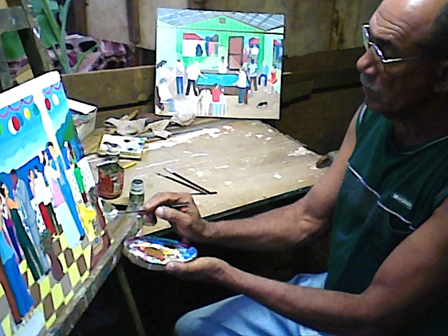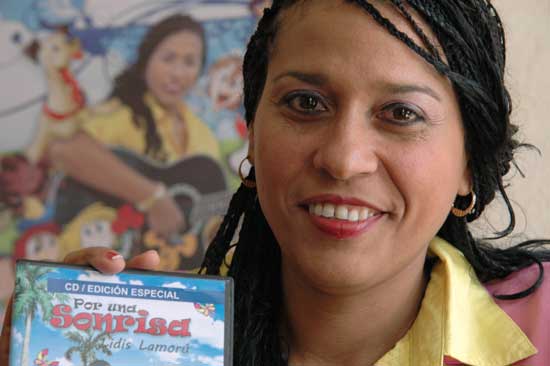Our identifying culture.
Moa has an amazing history, of legendary and autochthonous men who have made this place have a well-earned space in the Cuban identity. November 7, 1939 is considered the day of the founding of the town of Moa, because that day begins the sawmill, which gives beginning to the contemporary Moa.
In this first industry stands out the Jamaican citizen Gilbert Yor Ritchie William, who was born on December 25, 1900 in Leinster Hills, Saint Mary, Jamaica, and comes to Cuba in 1924, making real contributions to the Moa culture. With the passing of time and thanks to the effort, creativity and willpower of men and women inspired and linked to the culture, it was opening little by little a path that, until today, is projected full of identity and tradition.
After the revolutionary triumph, several facilities were built in our municipality that have made possible the ramification and deepening of artistic manifestations, among which it is worth mentioning the "Alejo Carpentier" Municipal Library, the Community History Museum, the "Joseito Fernandez" House of Culture, the "Ciro Redondo" Cinema, a video library, among others. a video library, among others.
Literature and plastic arts
Among the artistic manifestations that stand out is the literary work in the municipality, which has a peculiar development led by the hand of several Moa writers, whose projects enrich the literary life of the inhabitants.
It is considered as the first book published in Moa "Mi Afición", by María Teresa Lorences, which came out in 1970 as a personal effort of the author, and consists of about 20 poems in three parts, reproduced in ditto in the factory Pedro Sotto Alba. In 1989 is edited and published, in collaboration with the Union of Construction Companies, the House of Culture and the Sectorial of Culture of Moa the book "El Sitio que Habitamos", an anthology with 13 Moa poets: Magalis Rodríguez, Alexis Triana, Miguel Ángel Martínez, José Poveda, Fernando Cabrera, Edilberto Rodríguez, Salustiano Palma, Meláneo Maden Betancourt, Orlando Carballoso, María Teresa Lorences, Agustín Pupo, Caridad Batista and Juana Robles. In 1983, Lidia González Couto won the national award with her play for children: Felo Jutía. Subsequently, in 1990, the book "Cercos" que teje la memoria, by José Poveda and in 1991, by Fernando Cabrera, "Paradoja de un hombre en la mirilla" were published.
In 1992 the ARTEFAB (Art in the Factories) Festival was held for the first time. This program was carried out for several years until the difficulties of the Special Period and the scarcity of resources prevented it from being resumed in October 2006. This event was sponsored by the Culture Councils of the companies, which administered the monetary budget and had the technical advice of the Municipal Culture Sector.
All genres were contested in this event. Along with this, the Onelio Jorge Cardoso Literature Contest was established, also sponsored by the Casa de la Cultura, by mutual agreement with the UNI, which was assigned its sponsorship to the Combinado Mecánico del Níquel, from 1995 to the present. In 1997 Germán David Fournier made a bulletin Mecaníquel that had its second edition in October 1999 where the winners of the ARTEFAB Contest were published. In the same year Julio Lores created the Ventana Bulletin, of which only two issues were published to promote the artistic vanguard.

The well-known Cuban university professor and writer Victor Hugo Pérez Gallo has spent part of his literary and scientific life here. His literary works include several award-winning titles, one of which reflects the daily life of the industrial city, with remnants of Soviet architecture and traditions.
His book "Las minas del olvido" is a fantastic sample of the different traditions and customs of the miners who live in the city of Moa and in the community of Punta Gorda, northwest of the metallurgical mining city.
In the plastic arts there are many moenses painters whose works have become the pride of the neighbors. Among them stands out the work of the artist Rafael Cala, whose plastic work recreates with dissimilar themes very genuine of the locality. Cala's memories of the municipality of Moa since he was a child are a very fresh reflection of the local traditions. He shows a very clear form in his representations, the ways of life of the inhabitants, historical places or representative sites of the Moa culture, he reflects it in the same way in his works highlighting very strongly the colors, with a primitive character.
Cala's works transmit to the new generation, the experiences, the reality of the municipality and the development it has achieved through the processes of industrialización.  His creations demonstrate that this artist has remained faithful to the idea of reflecting the cultural traditions of the land where he grew up. The history of Moa, achieved through pure colors, intense tonalities and simple drawings, is recreated from its origins to the present day, showing a city full of legends, images of architectural constructions that no longer exist in the environment, which he brings to life with his oil paintings and exhibits the result of an intense study of Moa's culture. His works have not only been exhibited in Cuba, but have also been shown in exhibitions in New York City and in the Tolausse region in the south of France.
His creations demonstrate that this artist has remained faithful to the idea of reflecting the cultural traditions of the land where he grew up. The history of Moa, achieved through pure colors, intense tonalities and simple drawings, is recreated from its origins to the present day, showing a city full of legends, images of architectural constructions that no longer exist in the environment, which he brings to life with his oil paintings and exhibits the result of an intense study of Moa's culture. His works have not only been exhibited in Cuba, but have also been shown in exhibitions in New York City and in the Tolausse region in the south of France.
The new pines
Since February 2008, the Children's Theater Group "Rayitos de Lucero" known as La Colmenita de Moa was created under the direction of José Turro Navarro, which has been distributing joy and smiles for 11 years, and which in its beginnings was a project designed with the objective of raising the integral formation of Moa's children, 

It is practically impossible when talking about culture and children in Moa not to mention Lidis Lamorú Febles, Cuban singer-songwriter known by all children and even adults, whose artistic career has garnered numerous awards. Daughter of a humble and hard-working family, since she was a child she learned to play the guitar and after graduating with a degree in History she devoted herself completely to what would be and is her great vocation: singer-songwriter of children's popular music. To this day, this daughter of Moa, who always returns to her homeland to share and spread happiness and joy to those who listen to her, continues with her beautiful work, teaching through the lyrics of her songs the values to grow as good people willing to make the world a better place.
Radio and more music
The ICRT complex (Cuban Institute of Radio and Television) located in Reparto Caribe consists of 2 buildings  where the radio station CMKV La Voz del Níquel which broadcasts on FM on 92.7 and MoaTV telecenter on VHF 59.0 are located. Among the most appreciated radio programs according to the last survey conducted by the public are: the popular "Proyecto 90" created by Gilberto Garcia Acosta and hosted by announcers Lianet Vargas Hernández and Fermín Escalona Fuentes, "Que viva la noche", created by Julio Antonio Azahares Montero and hosted by Ricardo Vielza Reyes, and "Cancionero Mexicano", original idea of Addel Charchabal and Yudith Borges, hosted by Gladis Molina Barallobre. They broadcast 18 hours a day with a very varied programming that covers almost all tastes and is closely rooted in the daily life of the Moense..
where the radio station CMKV La Voz del Níquel which broadcasts on FM on 92.7 and MoaTV telecenter on VHF 59.0 are located. Among the most appreciated radio programs according to the last survey conducted by the public are: the popular "Proyecto 90" created by Gilberto Garcia Acosta and hosted by announcers Lianet Vargas Hernández and Fermín Escalona Fuentes, "Que viva la noche", created by Julio Antonio Azahares Montero and hosted by Ricardo Vielza Reyes, and "Cancionero Mexicano", original idea of Addel Charchabal and Yudith Borges, hosted by Gladis Molina Barallobre. They broadcast 18 hours a day with a very varied programming that covers almost all tastes and is closely rooted in the daily life of the Moense..
Moa's music has among its most significant antecedents the musical group "Los Tabera", who represent an exponent of great historical value in the development of Moa's folklore and who, impregnated with that creative spirit and under the motto "As long as there is a Tabera, there will be Conga in Moa", were able to spread tradition and rhythm in various stages of the eastern provinces for many years.
It also has a professional orchestra of popular music known as "Los Hermanos Neyra" with more than 45 years of foundation and that with talent and dedication, along with the work of several groups of amateur musicians makes our identity gain more weight in the mentality of those who always carry the Moense spirit wherever they are. It has become a tradition a new form of cultural entertainment known as the Moense Night that takes place every Saturday with wide popular participation. There are many manifestations in sculpture, literature, among others. Many sculptures that today embellish the city have come from the hands of Moense artists.



